The Complete Guide to Keeping Your Geraniums Hydrated and Healthy
Geraniums are one of the most popular flowering plants in the world—and for good reason. Their vibrant blooms, delightful fragrance, and adaptability make them a favorite in both gardens and containers. But as easy as they are to grow, one common question persists for every gardener, novice or expert: how often should you water a geranium?
The answer isn’t always straightforward. Factors like weather, pot size, soil type, and plant variety can influence how much water your geranium needs. This article explores everything you need to know about watering geraniums to help them thrive indoors and outdoors.
Understanding the Basics: What Makes Geraniums Unique?
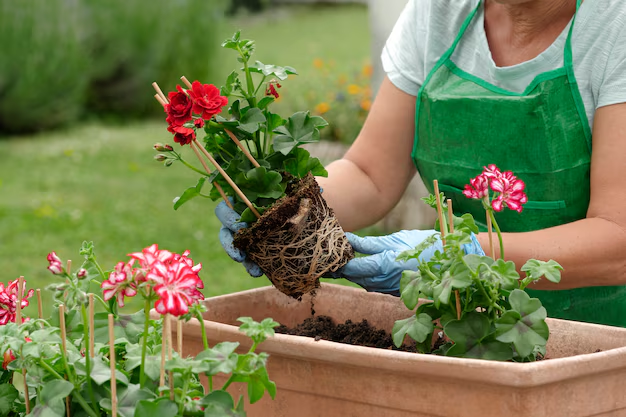
Before diving into watering schedules, it’s important to understand what kind of plant you’re dealing with. True geraniums (hardy geraniums or cranesbills) and pelargoniums (commonly called geraniums in nurseries) both fall under the Geraniaceae family but have different water preferences.
Most commonly grown geraniums are Pelargonium varieties, such as zonal geraniums and ivy-leaved geraniums. These are semi-succulent, meaning they can store moisture in their stems and tolerate short dry spells better than many other garden plants.
This semi-succulent nature means overwatering is far more dangerous than underwatering. Geraniums dislike soggy roots and thrive best in soil that dries out slightly between waterings.
How Often Should You Water Outdoor Geraniums?
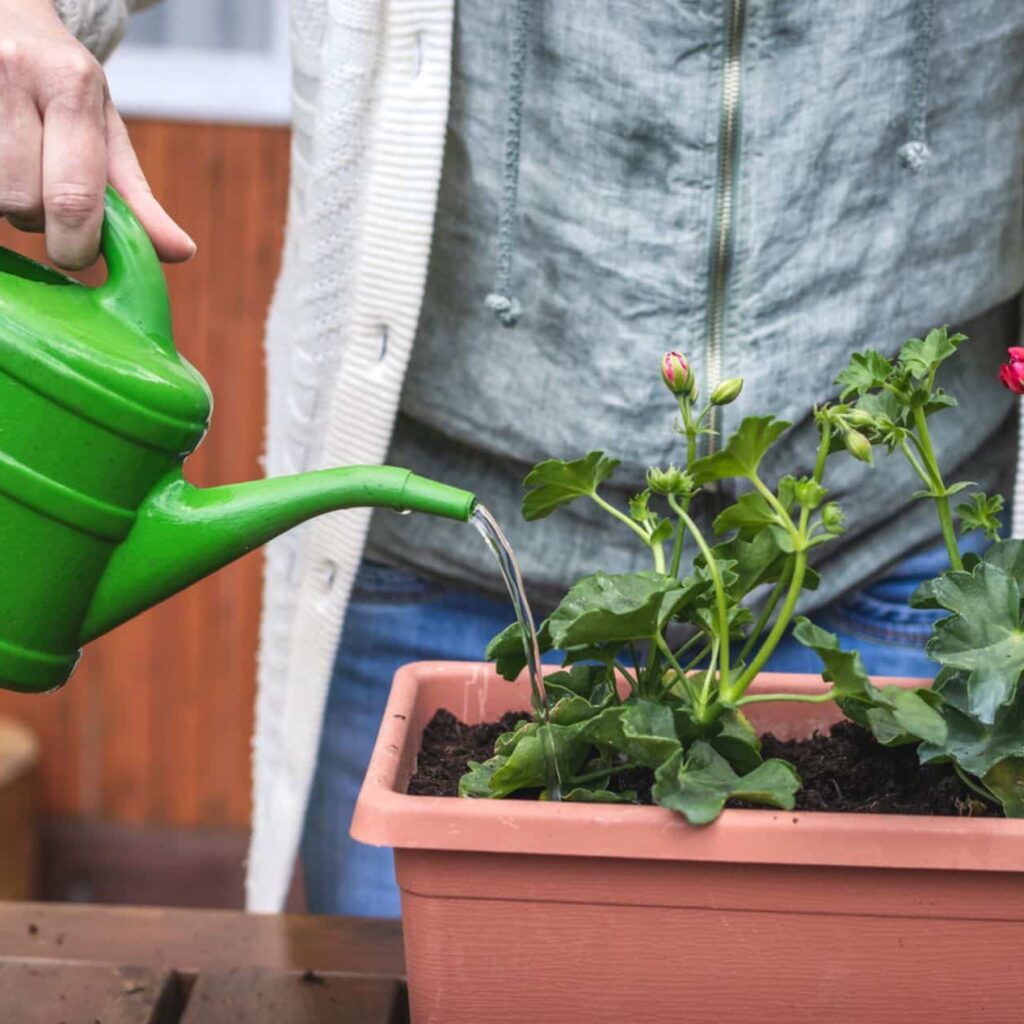
Outdoor geraniums are often planted in garden beds, hanging baskets, or containers, and each environment affects their water needs.
In Garden Beds:
- Frequency: Water every 4–7 days, depending on weather and soil.
- Tips:
- Allow the top 1–2 inches of soil to dry out before watering again.
- During hot summer months, you may need to water more frequently—every 2–3 days if the soil dries fast.
- In cool or rainy seasons, reduce watering to once a week or less.
In Pots and Containers:
- Frequency: Water every 2–4 days in summer, and every 4–7 days in spring or fall.
- Tips:
- Potted plants dry out faster than those in the ground.
- Use a container with good drainage holes.
- Check moisture levels by inserting your finger into the soil; if it’s dry 1 inch below the surface, it’s time to water.
How Often Should You Water Indoor Geraniums?
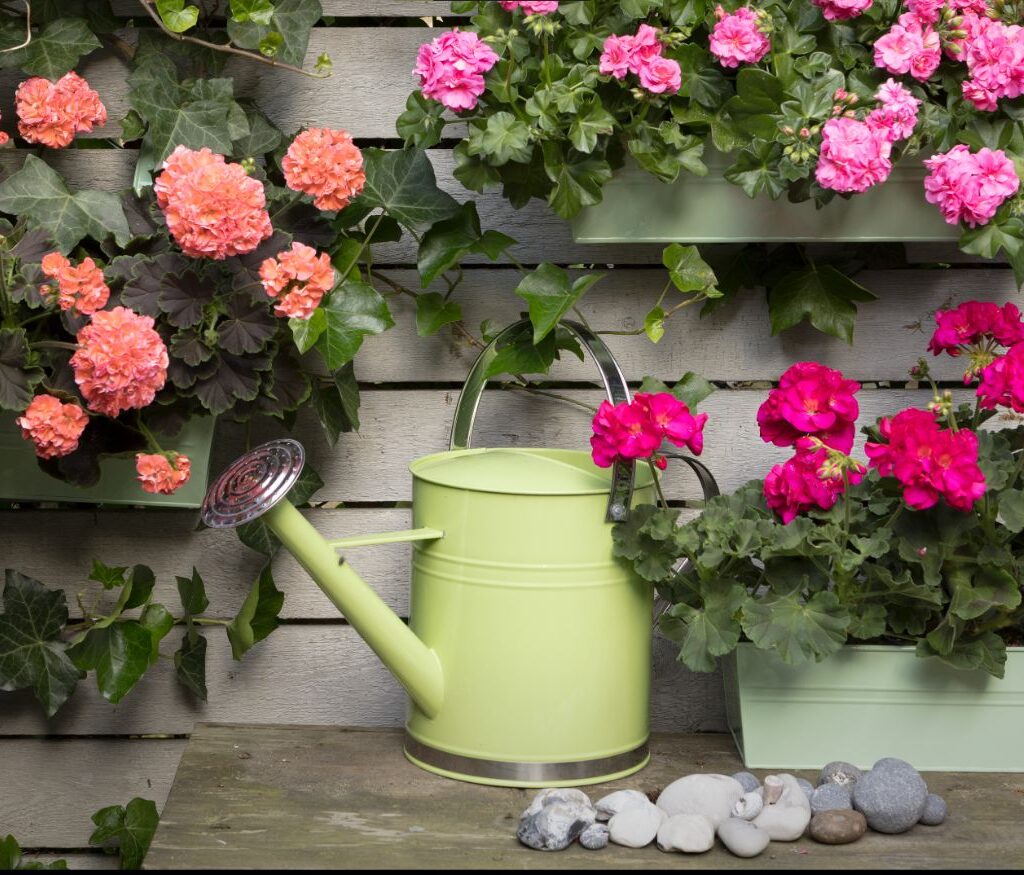
Indoor geraniums usually require less frequent watering because they’re not exposed to wind or direct sunlight all day. However, dry indoor air (especially from heaters) can still affect moisture levels.
Frequency:
- Water every 7–10 days, depending on temperature and humidity.
- In winter, when growth slows, water even less—maybe every 2–3 weeks.
Indoor Tips:
- Use a well-draining potting mix.
- Avoid letting the plant sit in standing water.
- Let the soil dry out between waterings, and be extra cautious in winter months.
How to Tell When Your Geranium Needs Water

Instead of following a strict calendar, it’s better to monitor your plant and soil. Here are signs that indicate it’s time to water:
Signs It’s Time to Water:
- Top 1–2 inches of soil feel dry.
- Leaves look slightly limp or soft.
- Pot feels noticeably lighter when lifted (if container-grown).
- No water droplets appear on the bottom after pressing the pot base.
Signs You’re Overwatering:
- Yellowing leaves that fall off easily.
- Mushy stems or foul smell from the roots.
- Soil that stays wet or soggy for days.
- Mold or fungus growing on the soil surface.
Overwatering leads to root rot, one of the most common killers of geraniums. It’s always better to err on the side of underwatering with these plants.
Best Time of Day to Water Geraniums
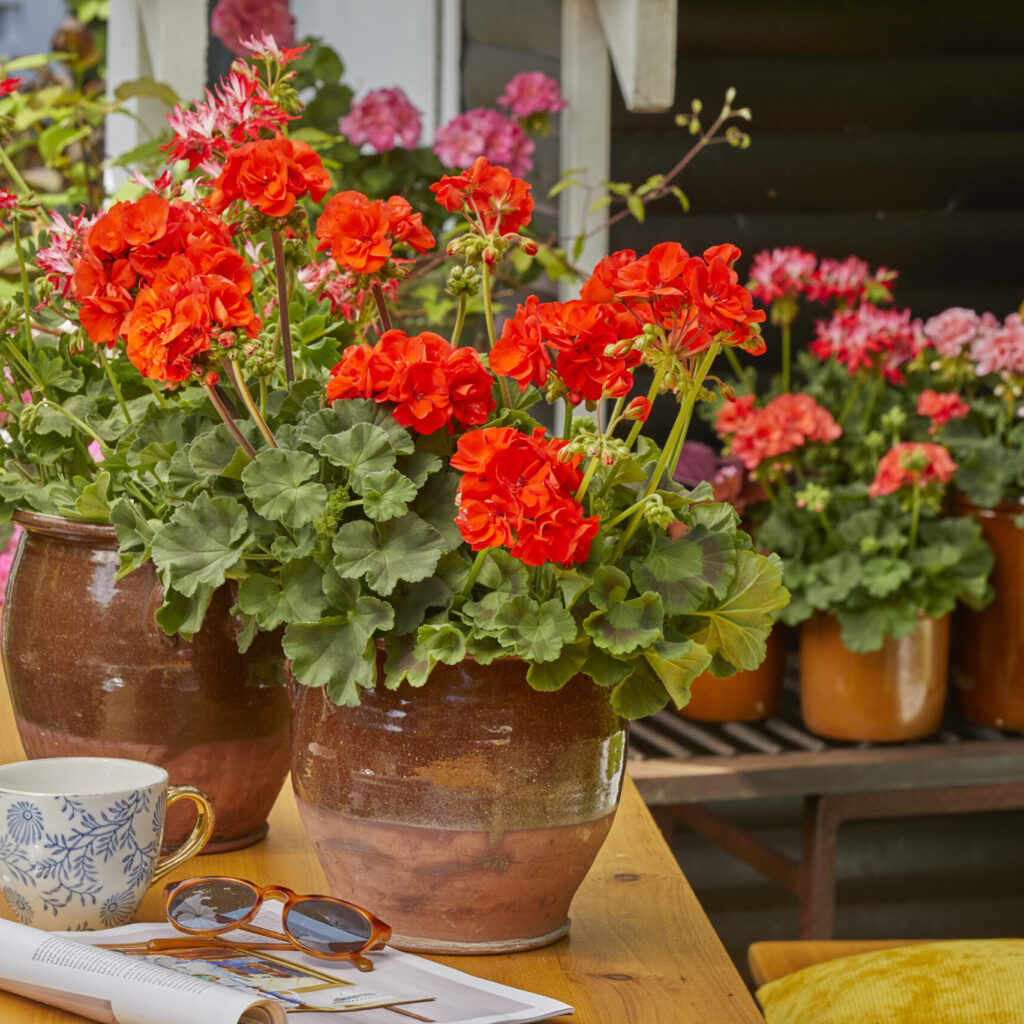
Always water early in the morning or late in the afternoon when the sun isn’t at its peak. This allows the leaves to dry off before nightfall, reducing the risk of fungal disease. Morning watering is best, especially on hot days, as it prepares the plant for the heat to come.
Watering Tips for Maximum Geranium Health
To keep your geraniums vibrant and blooming, follow these expert-approved watering tips:
1. Use Room-Temperature Water
Avoid icy cold water, especially for indoor plants. Cold water can shock the roots and stunt growth.
2. Water at the Base
Always water directly at the base of the plant to avoid wetting the foliage. Wet leaves are more prone to disease.
3. Soak, Don’t Sprinkle
Give the plant a good soak until water drains from the bottom of the pot. Shallow watering causes roots to stay near the surface.
4. Adjust for Weather Changes
Water more during heatwaves, and reduce during cool, cloudy, or rainy weather. Geraniums need less water when they’re not actively growing.
What Type of Water Is Best for Geraniums?
If possible, use rainwater or filtered water. Tap water with high mineral content can cause a white residue buildup in the soil. If you must use tap water, allow it to sit for a few hours before using to let chlorine evaporate.
Do Geraniums Like Humidity?
Geraniums prefer low to moderate humidity. Excess humidity can lead to fungal infections. Make sure there’s good air circulation around the plant, especially indoors or in greenhouse settings.
Watering Geraniums by Season
Spring:
- Increase watering as temperatures rise.
- Begin regular fertilization (every 2–4 weeks) to support new growth.
Summer:
- Water frequently; monitor soil closely.
- Deadhead spent blooms and trim leggy growth.
Fall:
- Reduce watering as temperatures drop.
- Prepare for dormancy, especially if bringing indoors.
Winter:
- Water sparingly if the plant is semi-dormant.
- Avoid feeding during this period.
Conclusion: Striking the Right Watering Balance
Geraniums are forgiving plants, but water management is key to keeping them blooming beautifully. The general rule? Let the soil dry out slightly between waterings, avoid soggy conditions, and adjust your watering routine based on your plant’s environment and the season.
By staying observant and responsive to your geranium’s needs, you’ll be rewarded with vibrant foliage and stunning flowers throughout the growing season.
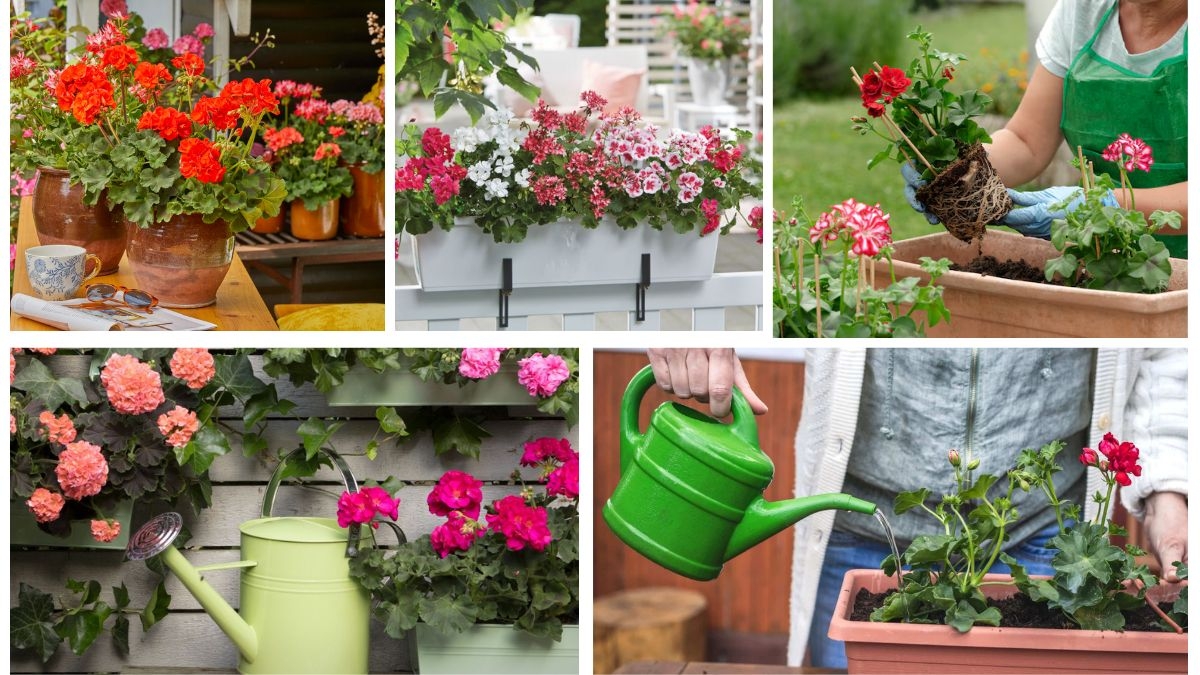





Leave A Comment